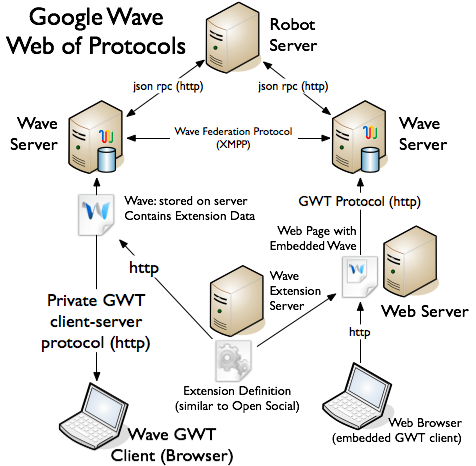Note: This post is purely personal opinion based on my preferences and work style. If your are looking for an analysis of Google Buzz based on methodical primary research, abort now.
I have heard many people say that their email inbox is the mother of all social networks. For me, however, email is the antithesis of a well-built, functioning social network, because it is a communication channel, not a collaboration enabler.
I value my social networks because I can work with members of those communities to get things done. When I worked at IBM, a very large company, my email inbox was more of a proxy for the organizational hierarchy than an instantiation of my social graph. Too much of my email activity was about low value (or value-less) communications and interactions imposed by command and control culture and systems. When I needed to communicate something up or down IBM’s or a project’s chain of command, I used email. When I needed to get something done, I contacted collaborators on Sametime (IBM’s instant messaging product), the phone, or BlueTwit (IBM’s internal-only, experimental microblogging system). In short, the contacts in my large corporation email address book were more reflective of the organizational structure than of my collaborative networks.
That is precisely why Google Buzz is a non-starter for me. The Google Contact list on which it is based does not represent my collaborative network, on which I rely to get work done. Very few of the people with whom I collaborate are represented, because I don’t interact with them via email. At least not often. A quick analysis of my Google Contacts list shows that Google Voice usage contributes more actionable, valuable additions to the list than does Gmail. My Gmail inbox is filled with communications, not action items, and most of them are low-value messages from application and service vendors whose tools I have downloaded or use online.
Google’s design of Buzz demonstrates ignorance of (or disregard for?) the reality that many social interactions happen outside of email. Had I wanted to use my Google Contacts list as a social network, I would have imported it into FriendFeed months ago. Strike One.
I just mentioned FriendFeed, which was my primary social network aggregator for several months. One of the reasons I backed away from heavy usage of FriendFeed was because it became little more than another interface to the Twitter stream. Yes, it is easy to inject updates from other sources into the FriendFeed flow, but, in reality, the vast majority of updates cam from Twitter (and still do.)
I see the same thing happening with Buzz. Too many people have linked their Twitter accounts, so that everything they tweet is duplicated in Buzz. And Buzz doesn’t allow for integration of the vast number of information resources that FriendFeed does. Talk about low-value. Strike Two.
I have not taken enough swings at Google Buzz yet to have recorded Strike Three. So, for now, I have not turned Buzz off. However, I am ignoring it and will not experiment again until Google provides integration with more external social networks.
In the meanwhile, I am still looking for a social tool that blends contacts and information streams from many sources, but lets me filter the flow by one or more sources, as desired. That would allow me to work both formal organizational and informal social networks from the same tool. Gist is promising in that regard, but needs to be able to capture information from more sources with corresponding filters. Hopefully, someone will read this post and either point me to an existing solution or build it. Until then, I will have to continue using multiple tools to communicate and collaborate.


 Today is the long-awaited day when 100,000 lucky individuals receive access to an early, but working, version of Google Wave. I hope I am in those ranks! Like many people, I have been reading about Wave, but have not been able to experience it hands-on.
Today is the long-awaited day when 100,000 lucky individuals receive access to an early, but working, version of Google Wave. I hope I am in those ranks! Like many people, I have been reading about Wave, but have not been able to experience it hands-on.









